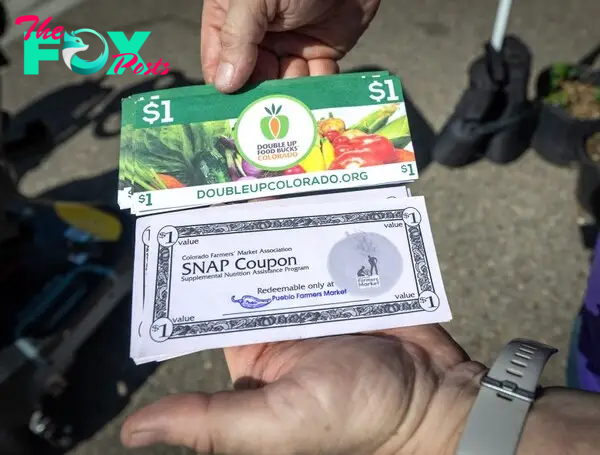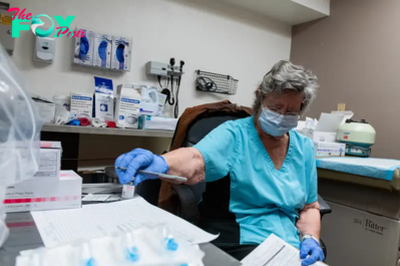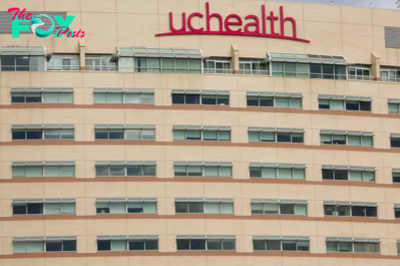Health
Farms and farmers markets support food-insecure families. Can these initiatives meet growing demands?
PUEBLO — Urban farmer Perdita Butler was ready to harvest her bok choy and fresh, crunchy kohlrabi outside her 1940s stucco home in Pueblo. It was early spring, and the nymph grasshoppers were already munching her crops, forcing her to cover her beds with protective gauze nets. She carefully peeled back the nets to reveal blue potatoes, golden beets, dinosaur kale and other vegetables erupting from the soil.
“What I love about farming is there’s always something new to learn,” Butler said, looking at the snap peas taking off on one side of the garden.
Later this summer, she’ll sell these vegetables and others she’s growing at a new farmers market on Pueblo’s East Side neighborhood—a community without a grocery store since the Safeway in the area closed seven years ago. Butler hopes to build community and improve nutrition in the neighborhood by selling fresh, affordable produce grown five miles away on her microfarm Quarter Acre and a Mule.
Federal, state and local programs that incentivize buying produce at farmers markets, including those in Pueblo, make them affordable to some low-income families and older adults in Colorado. In addition to increasing participants’ access to fresh fruit and vegetables, these programs support small farmers like Butler and boost local economies, especially during the summer and fall harvest cycles.
Three programs specifically help low-income older adults and women and their children in Colorado: Colorado Women, Infants, and Children (WIC) Farmers’ Market Nutrition Program, Boulder County WIC Farmers Market Program, and the Colorado Nutrition Incentive Program.
“It’s a win-win. You’re feeding people. You’re supporting farmers,” said Daysi Sweaney, director of healthy food incentives at Nourish, a nonprofit that helps implement and run some of these programs.
Consumers and growers have participated in farmers market programs in Colorado over the past five years, but barriers such as funding cuts and limited time, transportation and money remain challenges.
Farmers market programs
According to the nonprofit Feeding America, Pueblo is among 10 counties with the highest rates of food insecurity in the state. Still, efforts to help families afford local produce are growing in the area. At the other Pueblo Farmers Market location, in downtown Mineral Palace Park, redemption of incentives for fruit and vegetables by low-income families increased significantly from $9,000 in 2020 when it began accepting them to $25,000 last year.
Growth of the federal Supplemental Nutrition Assistance Program (SNAP) and Double Up Food Bucks—a grant-funded program available in some states like Colorado that gives SNAP participants double the amount to spend on fruit and vegetables—and the WIC Farmers’ Market Nutrition Program has contributed to the increased use, said Marci Cochran, market director for the Pueblo Farmers Market.
“The WIC Farmers’ Market Nutrition Program is explosive in Pueblo,” Cochran said of the program.

Funded by the U.S. Department of Agriculture, the Colorado Department of Public Health and Environment program gives $30 annually in coupons for each participating family member to spend at 22 participating farmers markets (down from 24 last year) statewide before Oct. 31. For example, a pregnant or new mom and her two children over six months of age would have $90 to spend during the season, an increase of roughly 8% from their annual WIC budget of approximately $1,092 for fruit and vegetables.
Angelika Sunie, 25, of Pueblo, who has two children ages 1 and 4, has used the WIC Farmers’ Market Nutrition Program for the past two seasons.
“It really helped stretch my benefits,” said Sunie, who also uses SNAP and Double Up Food Bucks.
Sunie bought green beans, Pueblo chiles and Palisade peaches at the farmers market. She made a peach crisp and a simple syrup out of peaches for tea.
She said it helped her bring healthier foods into her home during the summer. Sunie added that she would have spent twice the amount allocated if it had been available.
When she was pregnant with her son in 2022, Sunie said eating more nutritious foods from the farmers market helped her pregnancy. However, she does not qualify for the program now that she has started a new job at UCHealth.
Sweaney said WIC families’ spending at farmers markets is highest along the Front Range corridor stretching from Pueblo to Greeley, but the redemption rate statewide is relatively low.

-

 Health4m ago
Health4m agoDoctor’s bills often come with sticker shock for patients − but health insurance could be reinvented to provide costs upfront
-

 Health15h ago
Health15h agoWhat an HPV Diagnosis Really Means
-

 Health20h ago
Health20h agoThere’s an E. Coli Outbreak in Organic Carrots
-

 Health1d ago
Health1d agoCOVID-19’s Surprising Effect on Cancer
-

 Health2d ago
Health2d agoWhat to Know About How Lupus Affects Weight
-

 Health5d ago
Health5d agoPeople Aren’t Sure About Having Kids. She Helps Them Decide
-

 Health5d ago
Health5d agoFYI: People Don’t Like When You Abbreviate Texts
-

 Health5d ago
Health5d agoKnee problems tend to flare up as you age – an orthopedic specialist explains available treatment options



























